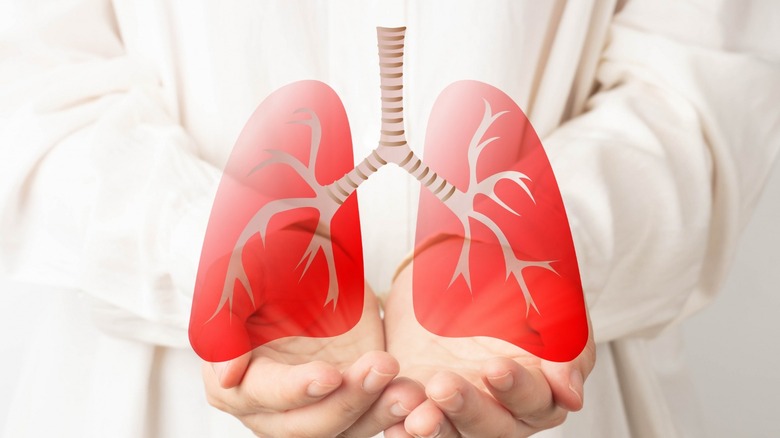What Are The Different Types Of Punctured Lungs?
The lungs are a pair of essential organs that deliver oxygen to the blood from the air that you breathe (per National Heart, Lung, and Blood Institute). You have two lungs, which help make up a major part of the respiratory system, as per the Cleveland Clinic. However, both lungs are not exactly identical. The right lung, for example, is made up of three lobes, while the left is only made up of two. Additionally, the left lung is a bit smaller than the right lung because it's near the heart.
Even though they sit behind the rib cage, these fragile organs can be damaged (per WedMD). Sometimes air can get out of the lung and fill the space between the lung and the chest wall, causing pressure to build (via Medical News Today). The lung can then collapse, making it hard to breathe fully. This is called a punctured lung, or pneumothorax. And it can happen in a few different ways. Here's everything you need to know about the different types of punctured lungs.
The symptoms and main types of punctured lungs
If you have chest pain, shoulder pain, or shortness of breath, it could be a sign of a punctured lung, says Medical News Today. In more extreme cases, symptoms may include bluish skin tone, difficulty breathing, fatigue, increased heart rate, lightheadedness, and a tight chest (via Penn Medicine). There are different types of punctured lungs, which can stem from different causes.
According to Healthline, a traumatic pneumothorax occurs from an injury that directly impacts the chest. For example, breaking your ribs can lead to traumatic pneumothorax. In fact, there are even medical procedures that deliberately collapse the lung in order to prevent potential occurrences (per Penn Medicine). A primary spontaneous pneumothorax, on the other hand, occurs in the absence of an apparent cause, as per Healthline. Finally, a secondary spontaneous pneumothorax is due to a prior health condition, like asthma or chronic obstructive pulmonary disease (COPD). Notably, smoking and unexpected changes in air pressure both increase your chances of experiencing a punctured lung.


